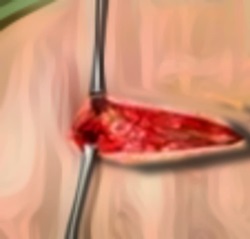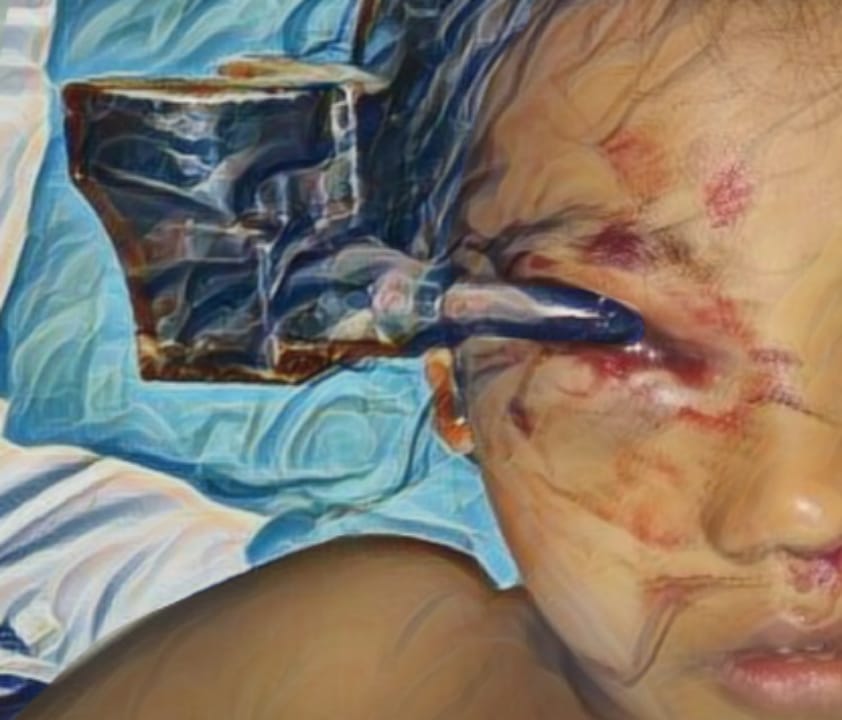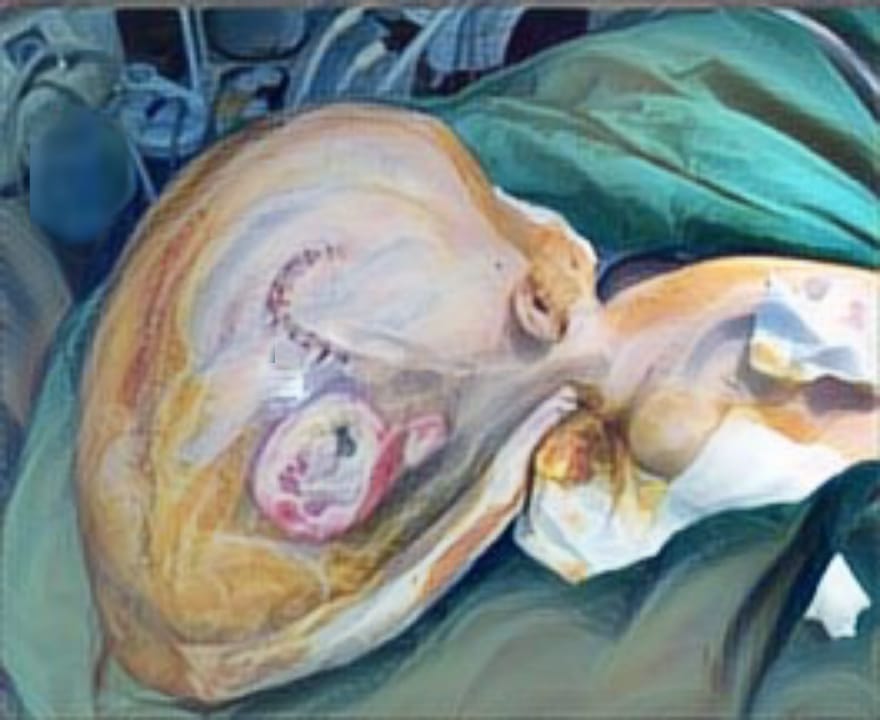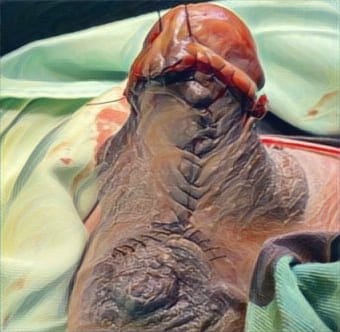USING OF NEGATIVE WOUND PRESSURE THERAPY (NPWT): A CASE SERIES OF WOUND DISRUPTION AS A COMPLICATION OF A CAESAREAN SECTION

Downloads
Highlights:
- Surgical site infection during caesarean section can cause complications, thereby increasing maternal mortality and morbidity, especially in groups at risk.
- VAC therapy can stimulate granulation tissue formation so that primary wound junctions occur.
- VAC shows its ability to close wounds entirely within 3-4 weeks.
Abstract:
Introduction: Wound disruption following caesarean sections is a common issue that can increase maternal mortality and morbidity. Several factors have been identified, including maternal, procedural, and antibiotic factors. The re-suturing method, primer, and secondary suture often fail, causing recurrent and delayed healing.
Case Illustration: CASE 1: A 26-year-old woman, 7 days post-caesarean section, presented with a wet wound and yellowish serous fluid. Three weeks later, wound dehiscence occurred despite re-debridement and re-suturing. Subsequent installation of VAC resulted in granulation tissue and re-epithelialization. CASE 2: A 32-year-old woman, 14 days post-caesarean section, complained of weakness and pus in the surgical wound. Upon examination, a red-yellowish fluid was found, indicating wound dehiscence. Re-debridement and VAC installation led to the formation of granulation tissue and re-epithelialization.
Discussion: VAC is the new wound care technique that suctions or collects excess exudate that absorbent gauze cannot accommodate. In comparison, absorbent gauze is limited in its capacity to absorb the fluid that produced in wounds. An innovation where the use of VAC, which has a negative pressure function, can stimulate granulation tissue to form and can bind the edges of the wound so that it can close naturally.
Conclusion: In instances of wound disruption following surgery, such as in the case of a caesarean section, it may be prudent to contemplate re-debridement followed by re-suturing. VAC presents itself as a viable alternative for managing wound dehiscence until the formation of granulation tissue.
Young PY and Khadaroo RG. Surgical site infections. Surgical Clinics, 2014; 94(6): 1245–1264.
Zuarez-Easton S, Zafran N, Garmi G., and Salim R. Postcaesarean wound infection: prevalence, impact, prevention, and management challenges. International journal of women's health, 2017; 81-88.
Jenks PJ, Laurent M, McQuarry S., and R. Watkins. Clinical and economic burden of surgical site infection (SSI) and predicted financial consequences of elimination of SSI from an English hospital. Journal of Hospital infection, 2014; 86(1): 24–33.
Guo S and DiPietro LA. Critical review in oral biology & medicine: Factors affecting wound healing. Journal of dental research, 2010; 89(3): 219–229.
Qian LW, Fourcaudot AB, Yamane K, You T, Chan RK., and Leung KP. Exacerbated and prolonged inflammation impairs wound healing and increases scarring. Wound repair and regeneration, 2016; 24(1): 26–34.
Kawakita T and Landy HJ. Surgical site infections after caesarean delivery: epidemiology, prevention and treatment. Maternal health, neonatology and perinatology, 2017; 3: 1–9.
Norman G, Shi C, Goh EL, Murphy EM, Reid A, Chiverton L., et al. Negative pressure wound therapy for surgical wound healing by primary closure. Cochrane Database of Systematic Reviews; 2022. Epub ahead of print 2022. DOI: 10.1002/14651858.CD009261.pub7.
Agarwal P, Kukrele R and Sharma D. Vacuum assisted closure (VAC)/negative pressure wound therapy (NPWT) for difficult wounds: A review. Journal of clinical orthopaedics and trauma, 2019;10(5):845-848.
Krieger Y, Walfisch A and Sheiner E. Surgical site infection following caesarean deliveries: trends and risk factors. The Journal of Maternal-Fetal & Neonatal Medicine, 2017; 30(1), 8-12.
Rosen RD and Manna B. Wound Dehiscence. Treasure Island (FL): StatPearls, 2019.
Zaver V and Kankanalu P. Negative Pressure Wound Therapy. Treasure Island (F):StatPearls, 2022. PMID: 35015413.
Orgill DP, Manders EK, Sumpio BE, Lee RC, Attinger CE, Gurtner GC., et al. The mechanisms of action of vacuum assisted closure: more to learn. Surgery, 2009; 146(1): 40–51.
Normandin S, Safran T, Winocour S, Chu CK, Vorstenbosch J, Murphy AM, et al. Negative pressure wound therapy: mechanism of action and clinical applications. In Seminars in Plastic Surgery,2021;35(3):164-170. 333 Seventh Avenue, 18th Floor, New York, NY 10001, USA:
Thieme Medical Publishers, Inc. DOI: 10.1055/s-0041-1731792
Morykwas MJ, Argenta LC, Shelton-Brown EI and McGuirt W. Vacuum Assisted Closure: a new method for wound control and treatment: animal studies and basic foundation. Annals of plastic surgery,1997; 38(6):553-562.
Braakenburg A, Obdeijn MC, Feitz R, van Rooij IA, van Griethuysen AJ., and Klinkenbijl JH. The clinical efficacy and cost effectiveness of the Vacuum Assisted Closure technique in the management of acute and chronic wounds: a randomized controlled trial. Plastic and reconstructive surgery, 2006; 118(2):390-397.
Sanjiwani NPGR and Murti IPK. Meta-Analysis: The Utilization of Negative Pressure Wound Therapy in Diabetic Foot Ulcers. Jurnal Rekonstruksi dan Estetik,2023;8(2):106-116.
Ramli RN, Kusumaputri AP, Prabowo AY, Kurnia Y and Prawoto AN. Management of a Rare Case of Pediatric Deep Sternal Wound Infection With Vacuum Assisted Closure (VAC). Jurnal Rekonstruksi dan Estetik, 2022;7(2):51–57.
Copyright (c) 2024 Herman Yosef Limpat Wihastyoko,Ellenora Resti Mustikaningrat, Dorothea Respa Kusumaningrat, Gisella Sekar Wruhastanti, Edith Sumaregita Rinhastyanti, Yohana Joni

This work is licensed under a Creative Commons Attribution-ShareAlike 4.0 International License.
JURNAL REKONSTRUKSI DAN ESTETIK by Unair is licensed under a Creative Commons Attribution-ShareAlike 4.0 International License.
- The journal allows the author to hold copyright of the article without restriction
- The journal allows the author(s) to retain publishing rights without restrictions.
- The legal formal aspect of journal publication accessbility refers to Creative Commons Attribution Share-Alike (CC BY-SA)



















